Falls Theater

105 S. Main Street
People still enjoy the old-time neighborhood feel and prices of this small movie theater built by Emil Carish and P. W. Ramer in 1927. Owned for more than 30 years by the late Twin Cities theater owner Stan McCulloch, it remains in the family and continues Stan’s tradition of offering the community first run movies at 1970s prices. Renovations were made to both interior and exterior to retain their 1920s feel. A second screen and theater room now give customers a choice of two movies each week.
Foster Cemetery
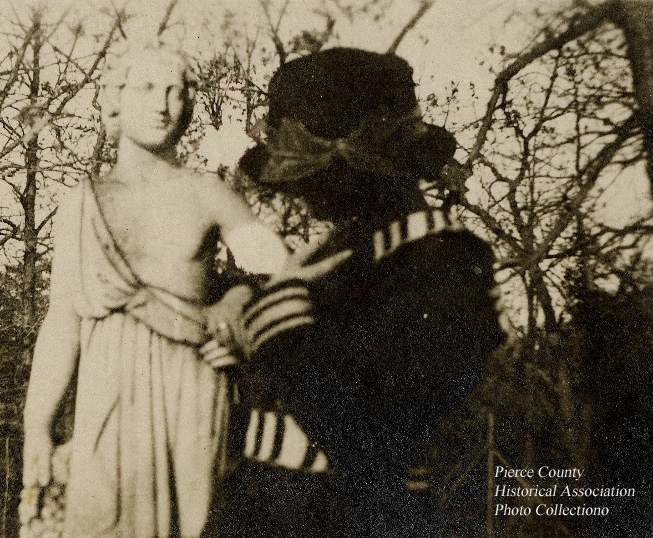
Access off Falls Street north of the power station
Set on a bluff above the Kinnickinnic River, this graveyard holds the remains of some of River Falls’ pioneering Foster family. Subject to vandalism throughout the years, its marble grave sculptures were destroyed decades ago, but several slabs have been restored and fencing has been replaced. The plot now belongs to the city and is part of a joint oak savanna/historic places conservation initiative supported by The Prairie Enthusiasts.
Gladstone Hotel Building
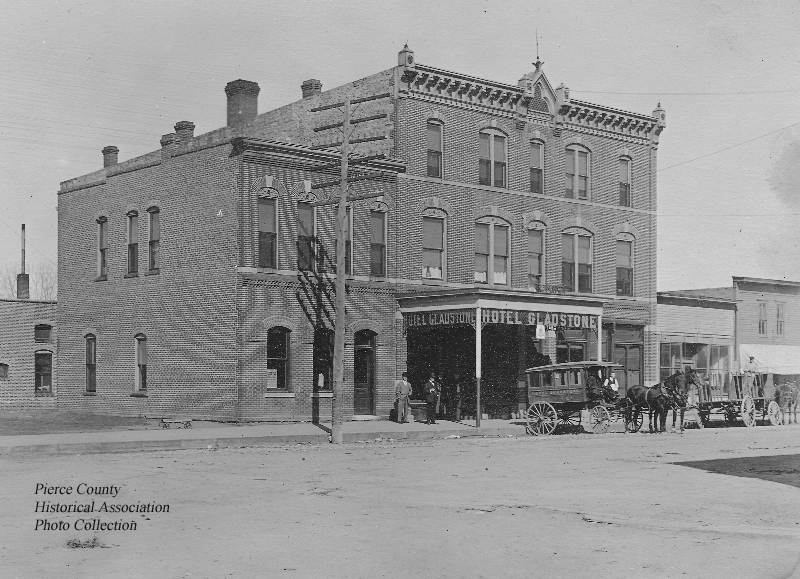
125 S. Main St.
Structures here and at the corner of Main and Locust streets have been hotels or boarding houses since early in the city’s history. Until it burned, a building that housed the Greenwood, Brackett and Central House hotels, built in 1855, occupied the corner site. Charles Knowles built the present structure on the lot to the north in 1886. Briefly known as the Garfield and later the Walvern hotels, the Gladstone was in business until the mid-1950s. The upper level has served as apartments for many decades, and the lower level has housed several restaurants and bars.
Glen Park
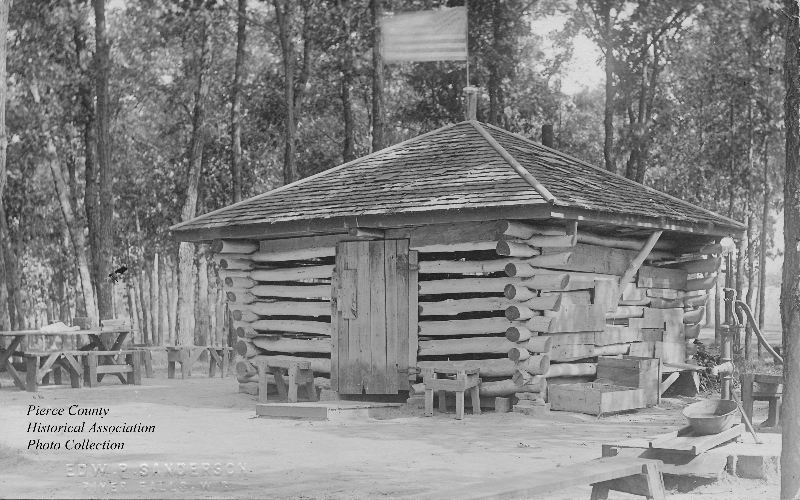
the Women’s Improvement League
W. Park Street and Glen Park Road
The 21 acres that comprise this park were bought by the city in 1898 and have been one of its most popular attractions. A small zoo once entertained area visitors, and the still well-used kitchen house, once a log structure, has been replaced several times. The park’s municipal swimming pool was built in 1937 during the Great Depression by local Works Progress Administration (WPA) employees. The still solid concrete. created by a local resident, was also used in WPA road culverts. The path leading from the upper park to the base of Junction Falls was once a carriage road. This site, long known as “The Glen” for its beauty, gave the park its name. Major property design changes that began in 2018 enhance recreation for the community.
Greenwood Cemetery
Division Street just east of N. 8th Street
This burial ground, officially in St. Croix County, has been used since the city of River Falls was known as Greenwood, named after its principal gristmill. The earliest known burials of pioneer families took place in the 1850s.
Junction Mill Site
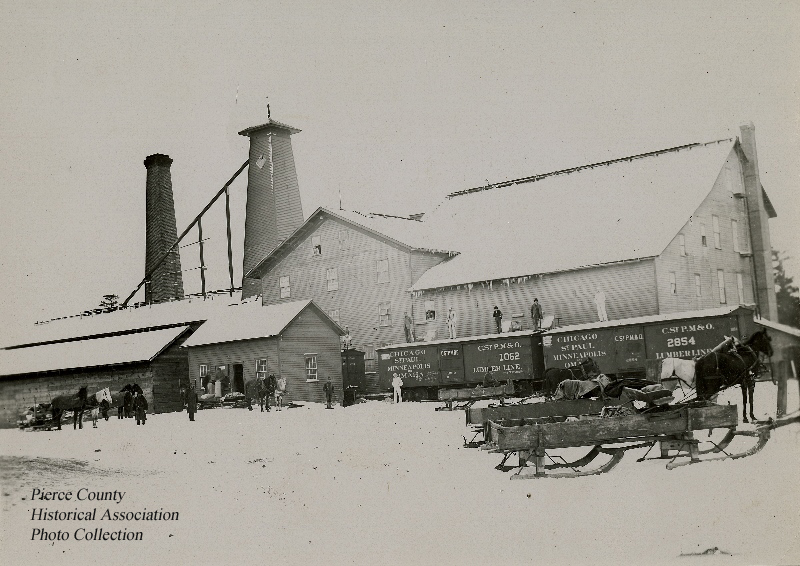
South Falls Road at Winter Street
Built by pioneer C. B. “Charley” Cox in 1867 at the top of the Kinnickinnic River’s Junction Falls, Junction Mill was one of city’s earliest grist mills. It helped the city become a major flour producer in the 1860s and 1870s. It burned in 1897 when the milling industry was declining and was not replaced. All that remains is its limestone and brick smokestack, restored in 2006 with locally donated funds. An historic marker erected by Pierce County Historical Association and The Tuesday Club commemorates the mill’s importance to the development of River Falls.
Lake George
Between S. Winter and Main Streets
This impoundment above the Junction Mill Dam was created in [the 1920s] as a buffer for Kinnikinnic River water during flash floods. It attracts migratory birds, waterfowl, and even a Bald eagle or two. Surrounding it is the White Pathway, a favorite community hiking trail. At the east end, the concrete supports for the defunct Hudson and River Falls Railroad track can still be seen. As of 2019, plans for dredging the lake, removing the dam, and returning the river to its natural course were being developed.
Municipal Power Plant and Dam
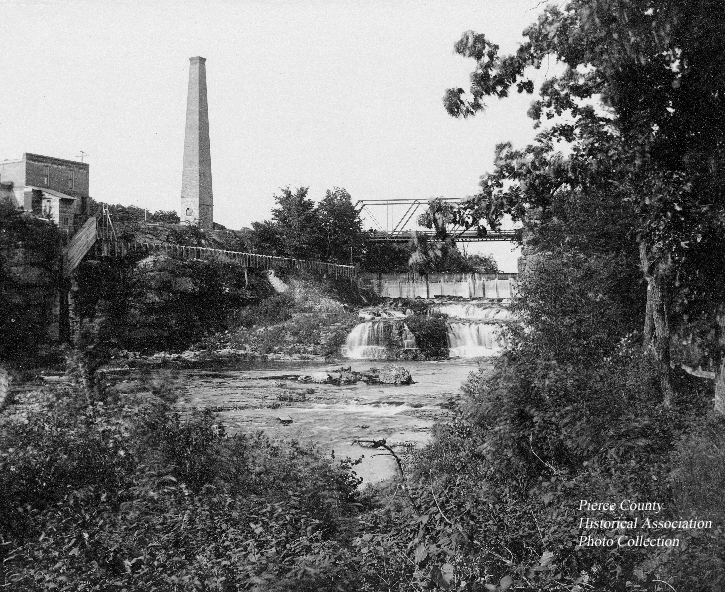
Near Junction Falls west of the S. Winter Street bridge
With no mill using the water power of Junction Falls on the Kinnikinnic River after 1890 and with hydroelectric power becoming desirable, River Falls citizens supported the erection of a city power plant on this site in 1900. The original rock filled timber crib dam was replaced with a concrete gravity dam in 1920. A diesel generator was added in 1923 and a new powerhouse built in 1948. Today, though the diesel generator is gone, Junction Falls still generates hydropower for city use. The smaller Powell dam downstream also continues to produce electricity.
Masonic Temple
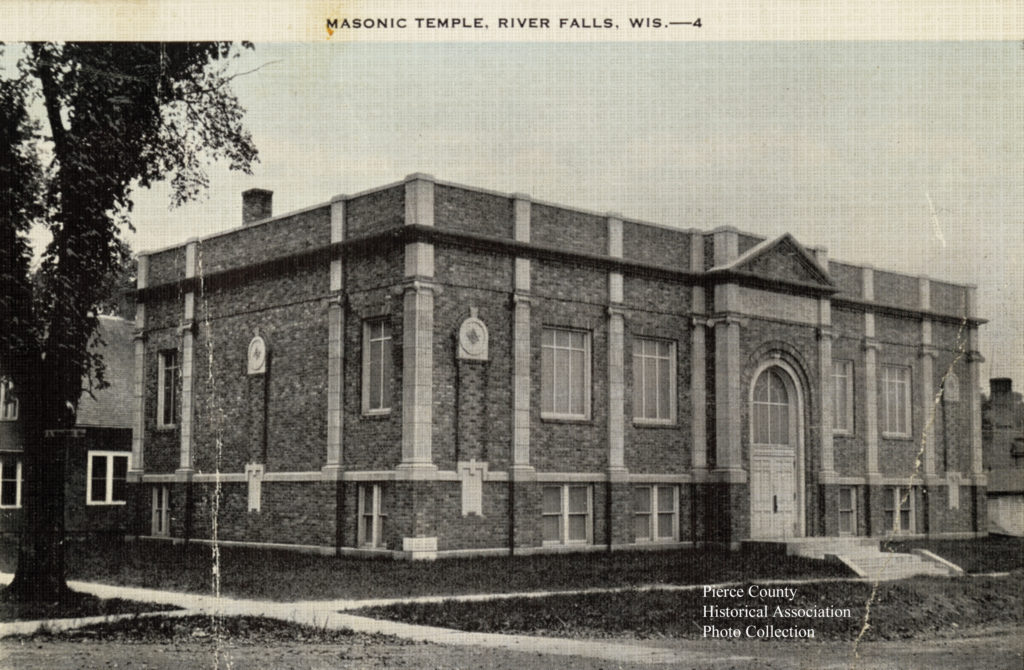
122 E. Walnut Street
This brick building has been in continuous use by the Grand Lodge of the Free and Accepted Masons since it was built in 1928.
Prairie Mill
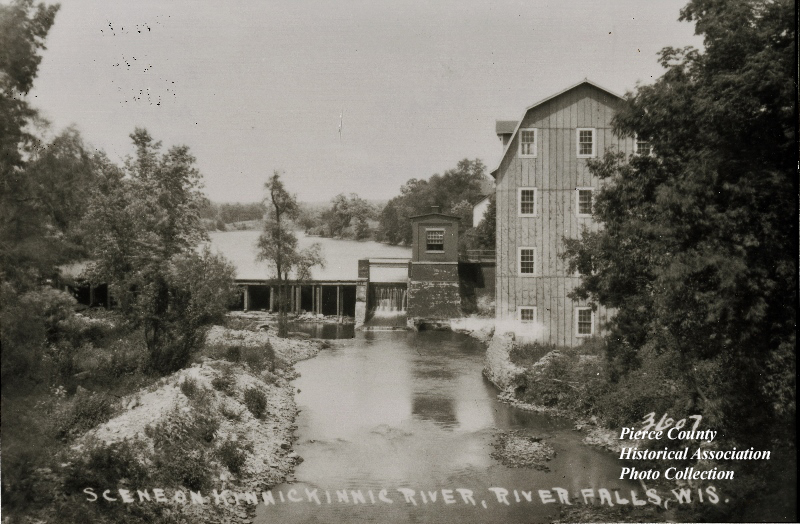
421 N. Main Street
Between 1934 and 1952, this refurbished and remodeled office building operated as a grist and flour mill. The first mill at the site, built by C. B. Cox in 1854, burned in 1916. Operations continued at its elevator across the street until that burned in the late 1920s. The present structure was built on the former mill site near the river. The early mills in the city were strictly water powered. Later, the water wheel powered an electric generator. Until washed away in the 1950s, the mills’ dam created a pond that became a popular local recreation site.
North Hall and South Hall – University of Wisconsin-River Falls
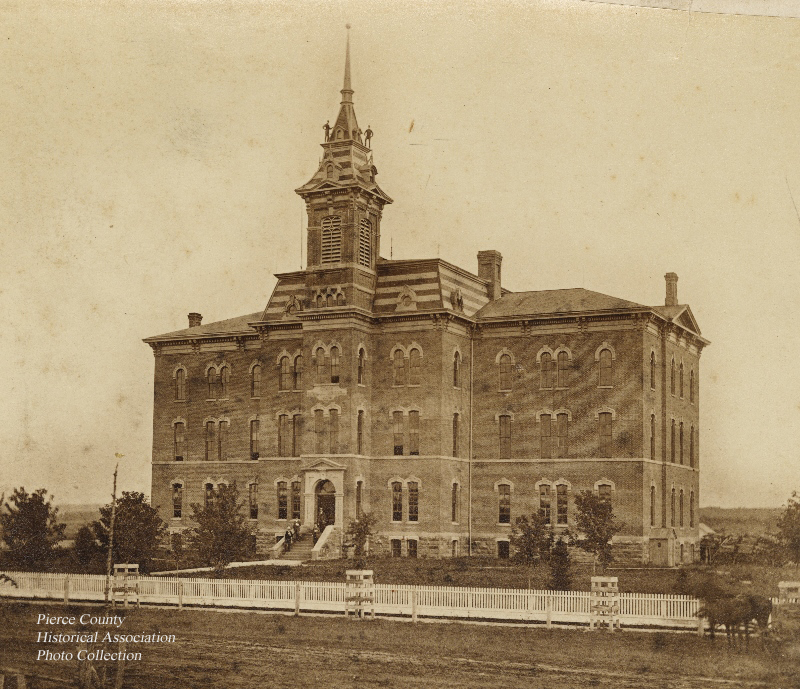
North and south sides of Cascade between 3rd and 4th Streets
Located at the center of the university campus, these buildings are the oldest currently used by the school. On the south side of Cascade, South Hall stands where the original State Normal School, built in 1874, burned in 1897. Its walls are double brick with an air space between them, making the building the most energy efficient on campus. Across Cascade, North Hall has stood since 1914, with an addition built in 1927. Both buildings are on the National Register of Historic Places.
River Falls Academy Site (demolished 2019)
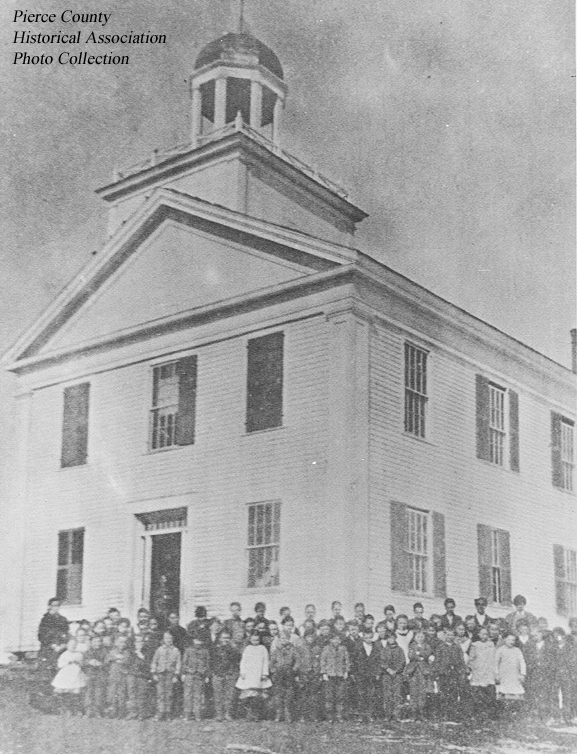
Maple Street between Pearl and Fremont Streets
The two-story Art Deco building at this location houses the Renaissance Academy and River Falls Montessori Charter School. Built in 1927, it first served as the city’s only elementary school, then its Junior High School and Middle School. The site, comprising two city blocks, was donated to the River Falls Academy Association by city pioneers and entrepreneurs, Nathaniel N. and Oliver S. Powell. The privately-held Academy was built on the eastern block in 1856, where it operated for six years. The city then bought the building for a public school. After it burned in 1879, a new brick building for elementary and high school classes was erected. In 1926, that, too, burned, and was replaced by the present structure, which includes two later additions. An historic marker, funded by student donations and Kinnic yearbook sales, commemorates the city’s ongoing dedication to education.
River Falls Methodist Church
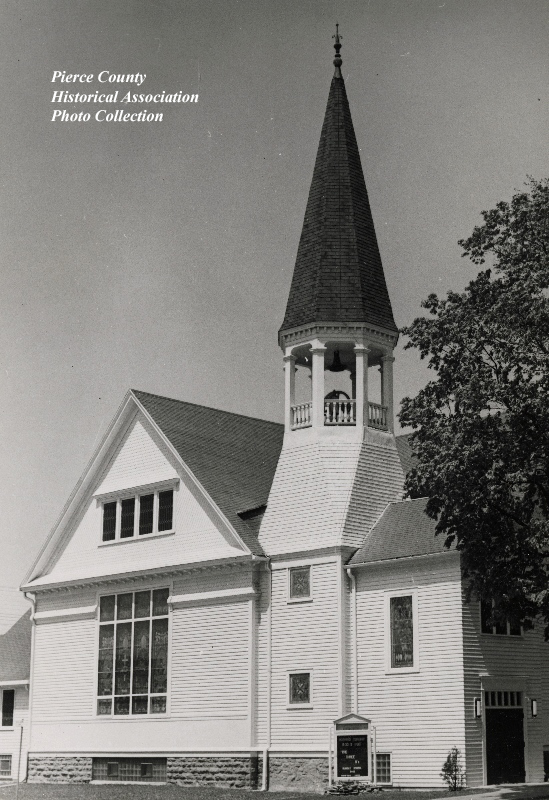
Northwest corner of 2nd and Walnut Streets
Built by the First Methodist Episcopal congregation in 1897 to replace the smaller 1860 house of worship, this building of eclectic styling served as classrooms when the Normal School burned late that the same year. It is now the oldest church building in the city. Efforts have been made to retain the original exterior and interior design.
Smith Building
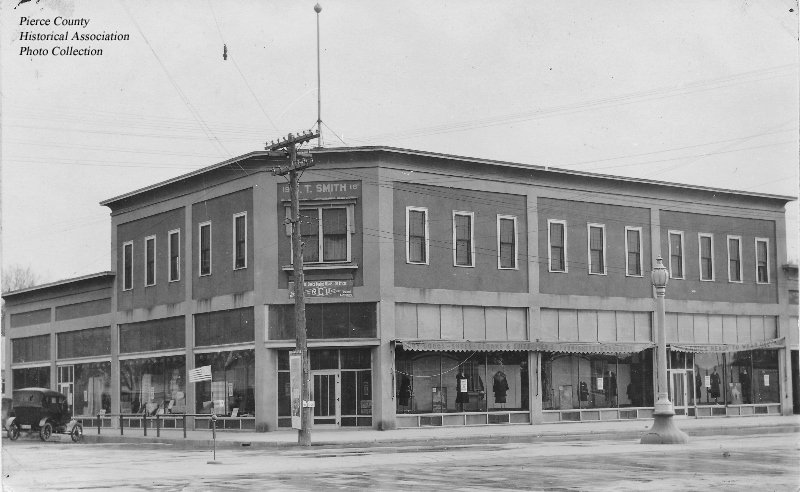
Southeast corner of Main and E. Walnut Streets
Built in 1916 for the Stewart Mercantile Company, this handsome brick building held a number of businesses, including a Snyder Drug Store until it became a not for profit store.
Suspension Bridge
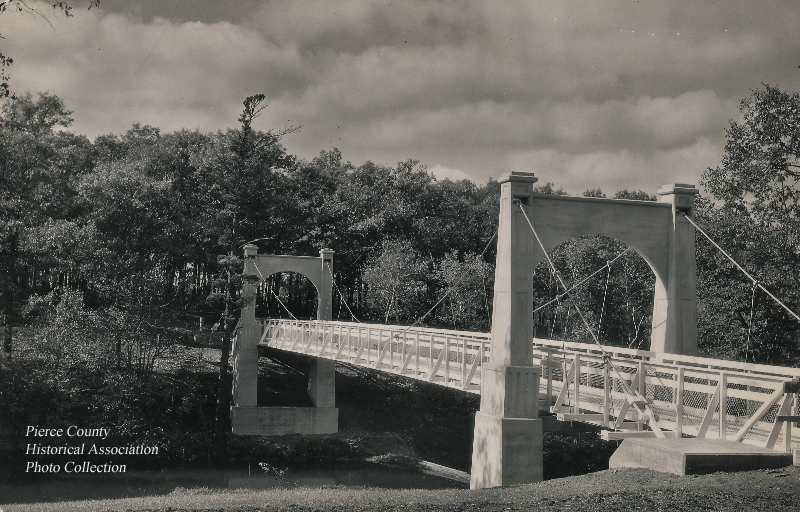
West of Main Street just off of Winter Street before the bridge.
Spanning the South Fork of the Kinnikinnic River above Cascade Falls, this suspension walking bridge was built in 1925 and is locally known as the “Swinging Bridge”. It’s well used by walkers and bicyclists to reach historic Glen Park from the city center.
